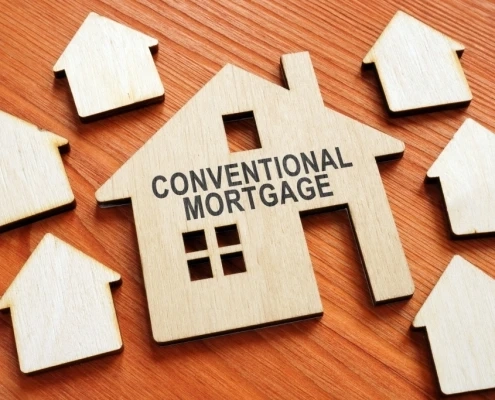A Guide to Conventional Loans
If you're considering buying a home or refinancing your mortgage, you've likely come across the term "conventional loan." But what exactly does it mean, and how does it differ from other types of loans? In this comprehensive guide, we'll walk you through everything you need to know about conventional loans, from the basics to the finer details.
What are conventional loans?
Conventional loans are mortgages that are not insured or guaranteed by the federal government. Instead, they are backed by conventional loans lenders, such as banks and mortgage companies.
How do they differ from other types of loans?
Unlike government-backed loans, such as FHA, VA, and USDA loans, conventional loans are not subject to government regulations and guidelines. This means they often have stricter requirements but may offer more flexibility in terms of loan terms and eligibility criteria.
Types of Conventional Loans
When it comes to conventional loans, there are several options to choose from, including:
Fixed-rate mortgages
With a fixed-rate mortgage, the interest rate remains constant throughout the life of the loan, providing stability and predictability for borrowers.
Adjustable-rate mortgages
Adjustable-rate mortgages (ARMs) have interest rates that can fluctuate over time, typically starting lower than fixed-rate mortgages but potentially increasing in the future.
Jumbo loans
Jumbo loans are conventional loans that exceed the conforming loan limits set by Fannie Mae and Freddie Mac, making them suitable for high-priced properties.
Qualifying for a Conventional Loan
Before you can secure a conventional loan, you'll need to meet certain eligibility requirements, including:
Credit score requirements
Most lenders require a minimum credit score of 620 to qualify for a conventional loan, although a higher score may be needed for competitive interest rates.
Debt-to-income ratio
Lenders also consider your debt-to-income ratio, which is the percentage of your monthly income that goes toward paying debts. Typically, lenders prefer a debt-to-income ratio of 36% or lower.
Down payment considerations
While conventional loans generally require a down payment of at least 3% to 5% of the purchase price, a larger down payment can help lower your monthly payments and avoid private mortgage insurance (PMI).
Benefits of Conventional Loans
Conventional loans offer several advantages, including:
Lower interest rates
Compared to other types of loans, conventional loans often have lower interest rates, especially for borrowers with excellent credit.
Flexible terms
Conventional loans come with a variety of term options, ranging from 10 to 30 years, allowing borrowers to choose a repayment plan that fits their budget and financial goals.
No mortgage insurance with 20% down payment
If you can afford to put down 20% or more on your home purchase, you may be able to avoid paying private mortgage insurance (PMI), which can save you money over the life of the loan.
Drawbacks of Conventional Loans
Despite their benefits, conventional loans also have some drawbacks, including:
Stricter requirements
Compared to government-backed loans, conventional loans often have stricter credit and income requirements, making them less accessible to some borrowers.
Higher down payment compared to government-backed loans
While conventional loans may offer lower down payment options than in the past, they still typically require a larger down payment compared to FHA, VA, and USDA loans.
Not suitable for all borrowers
Conventional loans may not be the best option for borrowers with less-than-perfect credit or limited savings for a down payment.
Process of Obtaining a Conventional Loan
If you decide that a conventional loan is right for you, here's what you can expect during the application process:
Pre-approval process
Before you start house hunting, it's a good idea to get pre-approved for a conventional loan, which involves submitting financial documents to a lender for review.
Application and documentation
Once you've found a property you want to purchase, you'll need to complete a formal loan application and provide documentation, such as pay stubs, tax returns, and bank statements.
Underwriting and approval
After reviewing your application and documentation, the lender will conduct a thorough underwriting process to assess your creditworthiness and determine if you qualify for the loan.
Factors Affecting Conventional Loan Rates
Several factors can influence the interest rate you'll receive on a conventional loan, including:
Economic conditions
Changes in the economy, such as inflation and employment rates, can impact mortgage rates and borrowing costs.
Credit score
Your credit score plays a significant role in determining the interest rate you'll qualify for on a conventional loan, with higher scores typically resulting in lower rates.
Loan amount and term
The amount of your loan and the length of your repayment term can also affect the interest rate, with larger loans and longer terms often resulting in higher rates.



